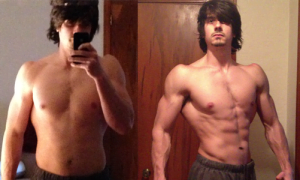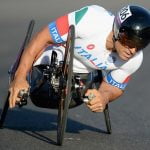

Bodybuilding is all about getting the most muscle possible. While there are many different techniques and routines that can be used to achieve this goal, one of the most important things you can do is to make sure that you have the right lighting for your workout.
Contents
- 1 What is good lighting for bodybuilding?
- 2 How to use good lighting for bodybuilding
- 3 Why is bad lighting bad for bodybuilding?
- 4 The Purpose of Good Lighting for Bodybuilding
- 5 Types of Light for Bodybuilding
- 6 How to Choose the Right Lighting for Your Home Gym
- 7 Tips for Working Out in Bad Lighting
- 8 What is good lighting for bodybuilding?
- 9 What is bad lighting for bodybuilding?
- 10 How to achieve good lighting for bodybuilding?
- 11 How to achieve bad lighting for bodybuilding?
- 12 What are the benefits of good lighting for bodybuilding?
- 13 What are the problems with bad lighting for bodybuilding?
- 14 How to get good lighting for your bodybuilding workouts
- 15 What is good lighting for bodybuilding?
- 16 What is bad lighting for bodybuilding?
- 17 How do you achieve good lighting for bodybuilding?
- 18 How do you achieve bad lighting for bodybuilding?
- 19 Conclusion
What is good lighting for bodybuilding?
Bad lighting can have a negative impact on your bodybuilding program. Inadequate light can cause you to make poor muscle gains, because it inhibits your ability to see the muscles you’re working out. Additionally, bad lighting can also lead to injuries.
Good lighting for bodybuilding should be bright enough to see the muscles you’re working out, but not so bright that it causes discomfort. You also want good lighting so that you can track your progress over time. Finally, good lighting allows you to work out longer without experiencing fatigue or pain.
If you’re serious about bodybuilding and want to maximize your results, invest in good lighting.
How to use good lighting for bodybuilding
There is no one perfect lighting setup for bodybuilding, but there are some key things to keep in mind when choosing good lighting. The most important factor is to consider the size and shape of your studio space, as well as the type of lighting you will be using.
When choosing studio lights, the most important thing to remember is that they should be aimed at the body, not the backdrop. This means that you should position the light so that its source is directly over your subject’s chest or shoulder. You can also use a light reflector to bounce light off of a white surface (like a wall) and onto your subject. This will help them look more defined and cut.
When it comes to using natural light, it is important to remember that sunlight has a yellowish tinge to it. To produce the best results with this type of lighting, you should position your subject close to a window or artificial light source. In addition, be sure to use fluorescent tubes or daylight bulbs instead of incandescent bulbs, which will give you better color reproduction and less distortion in the light.
No matter what type of lighting you choose, always make sure to experiment and find what works
Why is bad lighting bad for bodybuilding?
When it comes to bodybuilding, bad lighting can have a devastating impact on your results. Poor lighting can make it difficult to see the muscle you’re working, making it harder to spot any progress you’ve made. Additionally, bad lighting can lead to fatigue and a decrease in your motivation. Ultimately, this will lead to less success when it comes to bodybuilding.
The Purpose of Good Lighting for Bodybuilding
One of the most common questions bodybuilders ask is what kind of lighting is best for them. With so many different types of equipment and lights on the market, it can be difficult to decide what’s best for your training.
The purpose of good lighting for bodybuilding is to create a stimulating environment that will help you achieve your goals. To achieve this, you need light that is both bright enough to see clearly but not so bright that it’s uncomfortable. You also want light that is evenly distributed so your muscles can be seen correctly. Finally, make sure the light doesn’t cast shadows on your physique which can make you look bulky or fake.
The best way to find the right lighting for your training is to experiment with different types of equipment and lights until you find what works best for you. There are a few things to keep in mind when selecting lighting:
-Is the light bright enough to see clearly?
-Is the light evenly distributed?
-Does it cast shadows on my physique?
Types of Light for Bodybuilding
There are a few types of light that can be used for bodybuilding. Incandescent light bulbs emit a harsh, orange-colored light that is not ideal for bodybuilding. Fluorescent tubes emit a soft, yellow-green light that is more appropriate for bodybuilding because it stimulates the production of hormones like testosterone and growth hormone. LED lights are the best type of light for bodybuilding because they emit a warm, natural light that provides the best results.
How to Choose the Right Lighting for Your Home Gym
When it comes to setting up your home gym, you have two main options: good lighting and bad lighting. Choosing the right lighting for your space can make all the difference when it comes to getting the most out of your workouts. Here’s a guide on how to choose the right kind of light for your needs.
Good Lighting for Home Gyms:
If you’re working out at home, good lighting is key. A good gym has bright, natural light that is poured into the space from overhead windows or skylights. This type of lighting is perfect for people who are trying to work out in a comfortable environment. You don’t need any artificial light to get a great workout in a good light environment.
Bad Lighting for Home Gyms:
If you want to maximize your time in the gym, bad lighting is not your best option. Many people think that using artificial light makes them work harder, but this isn’t always true. In fact, using too much artificial light can actually interfere with your workouts and make it more difficult to see what you’re doing. If you’re serious
Tips for Working Out in Bad Lighting
Working out in bad lighting can be a major deterrent to getting your bodybuilding routine done. However, with a little bit of creativity and some proper planning, you can still get your workouts in under the dismal light conditions. Here are a few tips to help you along:
1. Use a light box. A light box is a great way to work out in bad lighting because it eliminates the need for artificial light. Simply place the light box near where you plan to workout and let it do the work for you. You can also use a light box to help improve your nighttime workouts by training your body to adapt to poor lighting conditions during the day.
2. Get creative with your lighting setups. If working out in bad lighting is not an option, at least make sure your surroundings are well-lit. Bring along some extra lamps or torches and set them up wherever you plan to workout. This will give you enough light to see what you’re doing and help keep you safe while working out alone.
3. Wear bright colors if possible. When working out in bad lighting, it’s important to try and avoid wearing dark colors that will absorb more light than other clothing options.
What is good lighting for bodybuilding?
Good lighting for bodybuilding can be defined as natural light. This type of lighting is considered the best because it is free from harsh shadows and bright light that can damage your eyes. You will also want to use a light that is properly positioned so that it casts a flattering shadow on your muscles.
If you are using a studio setting, then you will need to use studio lights. These lights are specifically designed to produce a certain look in pictures and videos. They are often very bright and harsh, which can damage your skin and eyes. If you’re using natural light outdoors, be sure to shield your eyes with sunglasses or a hat when lifting weights.
If you are not using natural light, then you will need to use artificial lighting. This type of lighting comes in two varieties: tungsten and fluorescent. Tungsten lights are the oldest type of artificial lighting and produce a warm yellow or orange glow. Fluorescent lights emit a bluish-white light and are more popular today because they are more efficient than tungsten lights.
Choose the kind of lighting that works best for your bodybuilding routine. Whether you’re using natural or artificial light, be sure to use proper positioning so that
What is bad lighting for bodybuilding?
There is no one answer to this question because there are so many variables that come into play when it comes to lighting for bodybuilding. However, some general tips about what lighting is bad for bodybuilding include using harsh light sources, such as ultraviolet (UV) radiation, or artificial light that is too bright. These types of lights can damage the skin and eyes, making it difficult to see the muscles and create improper muscle development.
How to achieve good lighting for bodybuilding?
There are plenty of great lighting setups for bodybuilding, and it really depends on what you’re looking for. If you’re looking to create a more natural and flattering look, using natural light will be your best option. However, if you’re after a more intense workout and want to see better definition in your muscles, using proper lighting will be key. Here are a few tips on how to achieve good lighting for bodybuilding:
1. Find a spot with plenty of natural light. A windowsill or outside is perfect for this type of setup.
2. Use a softbox or another type of modifier to create the desired effect.
3. Use a light meter to find the right exposure for your picture. Be sure to experiment until you find the perfect balance between intensity and natural light.
How to achieve bad lighting for bodybuilding?
There are many ways to achieve bad lighting for bodybuilding. One way is to use harsh studio lights that cast a harsh shadow on your physique. Another way is to use fluorescent or natural light that casts an unflattering light on your muscles. Here are some tips on how to achieve bad lighting for bodybuilding:
– Use bright, but not too bright, studio lights. This will create a flattering light on your muscles while still allowing you to see the detail in your physique.
– Use natural light if possible. This will give you a more balanced look and avoid the harsh shadows cast by studio lights.
– Use a reflector to bounce the natural light back onto your muscles. This will help improve their visibility and give you a more flattering look.
What are the benefits of good lighting for bodybuilding?
When it comes to bodybuilding, proper lighting is essential. It can help you achieve your fitness goals faster and with less hassle. So what are the benefits of good lighting for bodybuilding? Here are five:
1. Good lighting enhances your workout performance. When you’re working out in bad lighting, it’s harder to see what you’re doing. You might not be able to get the same results as you would under better conditions. On the other hand, good lighting makes it easy to see your muscles and track your progress.
2. Good lighting helps you maintain a healthy weight. If you’re constantly squinting at your equipment in the dark, it’s harder to avoid overeating. But with good lighting, you can stay on track with your diet and still see results.
3. Good lighting can help you achieve a more aesthetically pleasing physique. When you can see every muscle in detail, it’s easier to develop a muscular symmetry that looks great on stage or in photos. And if you’re training in a poorly lit gym, you might wind up training harder than necessary simply because there’s no contrast against which to judge your efforts.
4.
What are the problems with bad lighting for bodybuilding?
When you are working out in bad lighting, it can be very hard to see what you are doing and to achieve your goals. Even worse, the wrong type of light can actually cause more harm than good when performing bodybuilding exercises.
Here are five problems with bad lighting for bodybuilding:
1) It is hard to see what you are doing. This can be a problem when trying to perform certain exercises correctly or when trying to follow a workout routine.
2) The wrong type of light can actually cause more harm than good when working out. For instance, using a tanning bed or a welding torch as your only source of light during workouts can be risky and potentially damaging your body.
3) It can be difficult to maintain proper form when working out in bad lighting. This is because it is hard to see exactly where your muscles are in relation to one another. In addition, improper form can lead to injuries down the road.
4) Bad lighting can also make it difficult to stay motivated during workouts. When you cannot see what you are doing or how well you are progressing, it becomes harder to keep pushing yourself forward.
5) Finally
How to get good lighting for your bodybuilding workouts
When you’re working out, it’s important to have the right lighting. Incorrect lighting can actually hurt your performance. Here are some tips on how to get good lighting for your bodybuilding workouts:
1. Find a well-lit area. A well-lit area will give you the best possible results. If you can’t find a well-lit area, try to get as close to a light source as possible.
2. Avoid using harsh light sources. Harsh light sources can damage your eyes and cause blemishes or wrinkles on your skin. Instead, use a light that is evenly distributed and has a warm glow.
3. Use proper equipment. Make sure that you have the appropriate equipment for getting good lighting for your bodybuilding workouts. This includes a set of workout clothes that cover your whole body and comfortable shoes that will let you move around easily.
What is good lighting for bodybuilding?
When it comes to bodybuilding, there are two main types of lighting: good and bad. Good lighting helps to define the muscles and creates a more aesthetically pleasing appearance. However, bad lighting can actually impair your performance. So what is the best type of lighting for bodybuilding?
The answer is that it depends on the individual. Some people prefer bright, harsh light while others feel more comfortable in softer light. Ultimately, the best option is to find a light that provides the best visibility and comfort for you.

What is bad lighting for bodybuilding?
If you’re like most people who work out, you probably think that good lighting is essential for a productive workout. But what if you’re wrong?
In this article, we’re going to explore the concept of bad lighting for bodybuilding and explain why it can actually be worse than no lighting at all.
First, let’s take a look at what good lighting looks like. In a well-lit gym, you’ll likely see plenty of natural light streaming in from the windows or skylights. This type of light is warm and flattering, giving your muscles a healthy glow. On the other hand, bad lighting can make you look ghastly. In dark gyms with little natural light, fluorescent bulbs are typically used as light sources. These bulbs produce harsh, white light that can give your muscles a sickly look.
Additionally, fluorescent lights tend to cause eye fatigue after just a few minutes of use. In fact, one study found that female bodybuilders who worked out under fluorescent lights experienced an increase in cortisol levels – an indicator of stress – compared to those who exercised in well-lit gyms. Finally, badlighting can also interfere with your body’s natural hormone production.
How do you achieve good lighting for bodybuilding?
There is no single answer to this question as lighting can have a tremendous impact on how your body looks in pictures and in real life. However, there are some general tips that will help you achieve good lighting for bodybuilding.
1. Avoid direct sunlight when photographing your physique. Direct sunlight can be incredibly damaging to your skin and eyes, and will cause your muscles to look significantly less defined. Try to find a shady spot or use a light modifier such as a reflector or umbrella to help soften the light.
2. Use a fill light to create shadows and add definition to your muscles. A fill light is a light located behind your subject that helps create shadows and definition in your muscles. This is especially helpful if you want to photograph someone in motion, as the fill light will help capture the movement of your muscles in stunning detail.
3. Use artificial lighting whenever possible. While natural lighting is great for capturing candid shots, artificial lighting is often more flattering and provides better photos overall. If you can’t get enough natural light, try using a portable flash unit to add extra brightness to your photos.
4. Experiment with different angles and settings to find what
How do you achieve bad lighting for bodybuilding?
There is no one-size-fits-all answer to this question, as the best lighting for bodybuilding will depend on the specific goals and needs of each individual gym. However, there are a few general tips that can be used to achieve bad lighting for bodybuilding.
First, make sure that your gym has plenty of natural light. If possible, try to have windows open so that light from the outside can flood in. This will help to create a more realistic and flattering lighting environment for bodybuilders.
Second, try to avoid using harsh artificial lighting. Instead, use softer light sources such as incandescent or fluorescent bulbs. These lights are less likely to cause skin damage and are generally more forgiving when it comes to photo editing.
Finally, make sure that your camera settings are correctly adjusted so that dark areas appear darker and light areas appear lighter. This will help to offset the unwanted reflections that can occur under harsh artificial lighting.
Conclusion
When it comes to bodybuilding, good lighting can make all the difference. Bad lighting can actually make you look worse by masking your muscles and making them difficult to see. So, if you want to put on a great show for the camera – and impress your friends and family – make sure to use good lighting. Here are some tips on how to do that:
1. Use a light box or similar device
2. Get a light stand
3. Get some decent lights
4. Rent studio space if necessary



